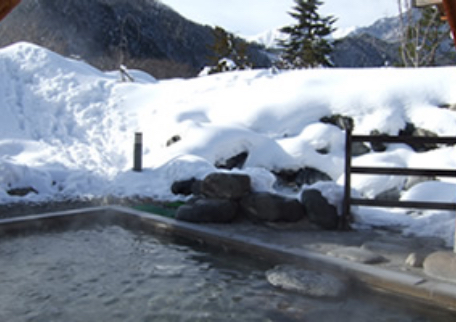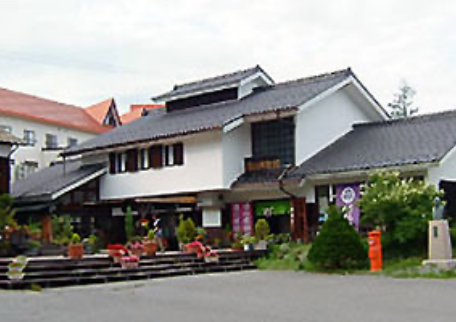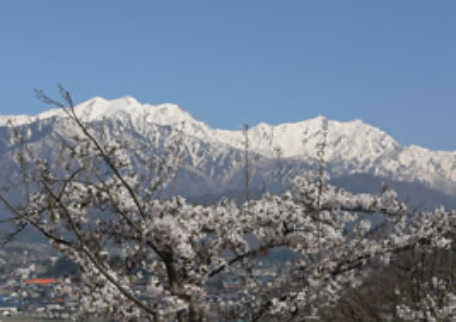Things to do
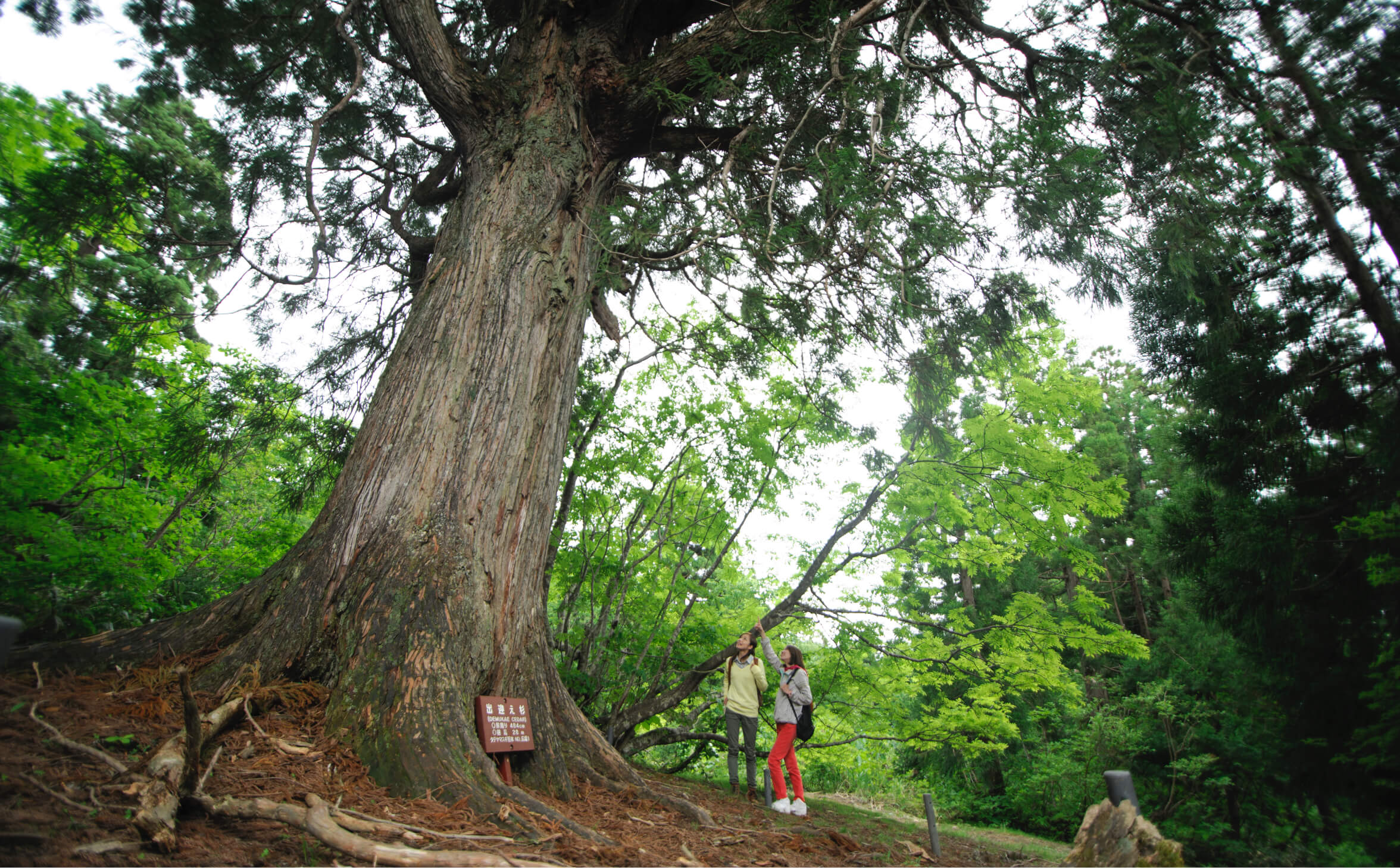
Bijodaira
The legendary and gigantic Beautiful Woman Cedar stands here. Walking paths stretch through virgin forests of beech and Tateyama Cedar. You can enjoy forest bathing, nature observation and bird watching.
- ・Bijodaira Virgin Forest
- A beautiful primeval forest composed of large beech trees and Tateyama Cedars.
- ・Beech Hill
- The highlight of the walking courses where you can see the rich flora of a 200 year old beech forest
- ・Bird Watching
- With over 60 species of bird identified, Bijodaira is a Mecca for bird watchers.
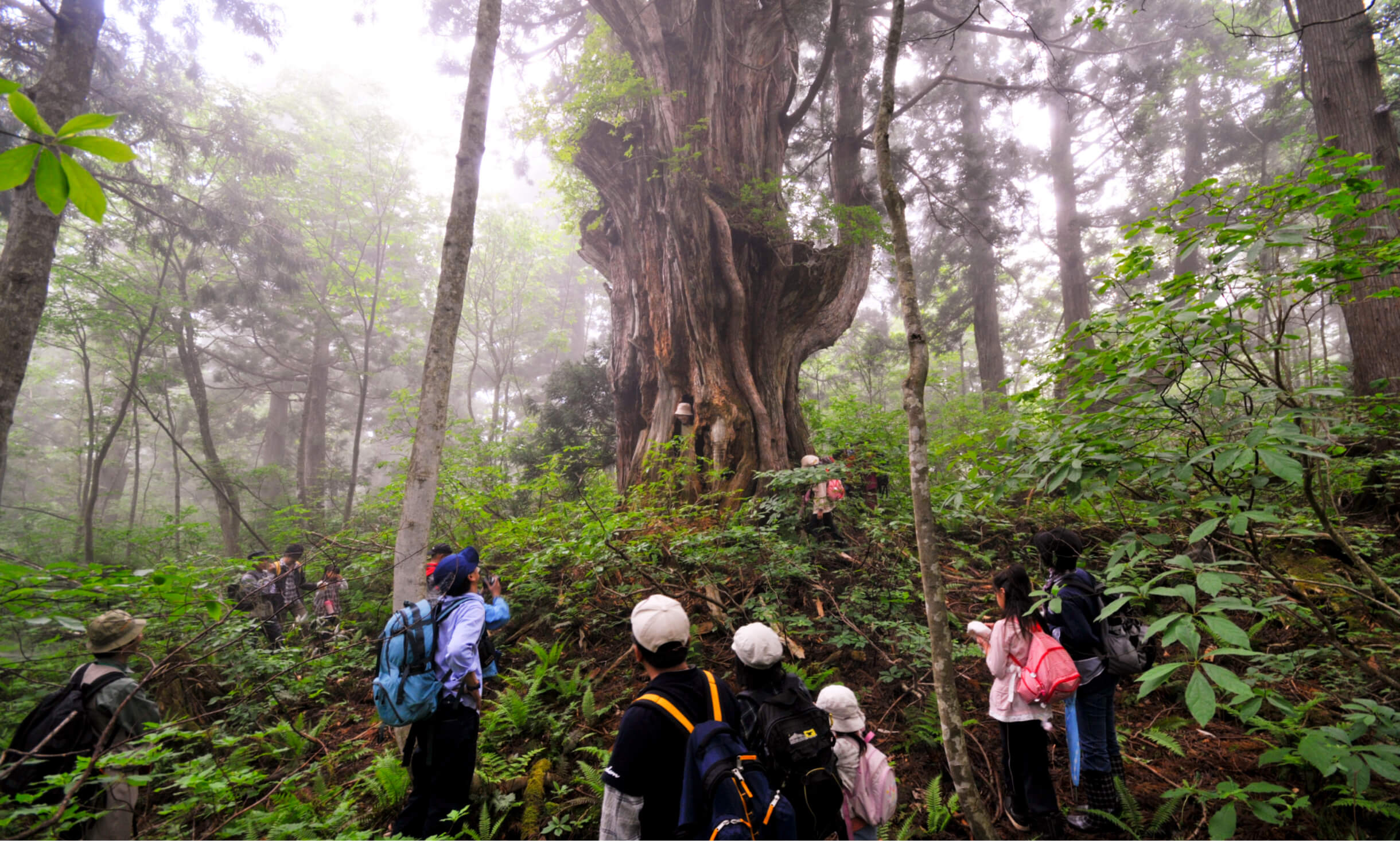
Tateyama Cedars
There are Cedars here that are 20-30 meters high with a circumference of 6-10 meters around their trunks. Some of these trees are estimated to be more than 1000 years old. The trees have been given interesting names such as “Welcome” Cedar, “Child-raising” Cedar, “Nursing Mother” Cedar, “Lifetime” Cedar, and “Ageless” Tree. See Walking Courses page.
Legend of the Beautiful Woman Cedar
1,300 years ago the man who opened up Mt. Tateyama was betrothed to a beautiful princess. However women were forbidden from entering Mt. Tateyama. The princess, sad at being separated from her love, climbed up to Bijodaira and told her sad tale to a beautiful cedar tree. She beseeched the tree “If you have a heart, please listen to my wish”. Later her wish was granted and the couple were happily married. From that day this tree has been called “Bijosugi” or “Beautiful Woman Cedar” and this area has been known as “Bijodaira”.
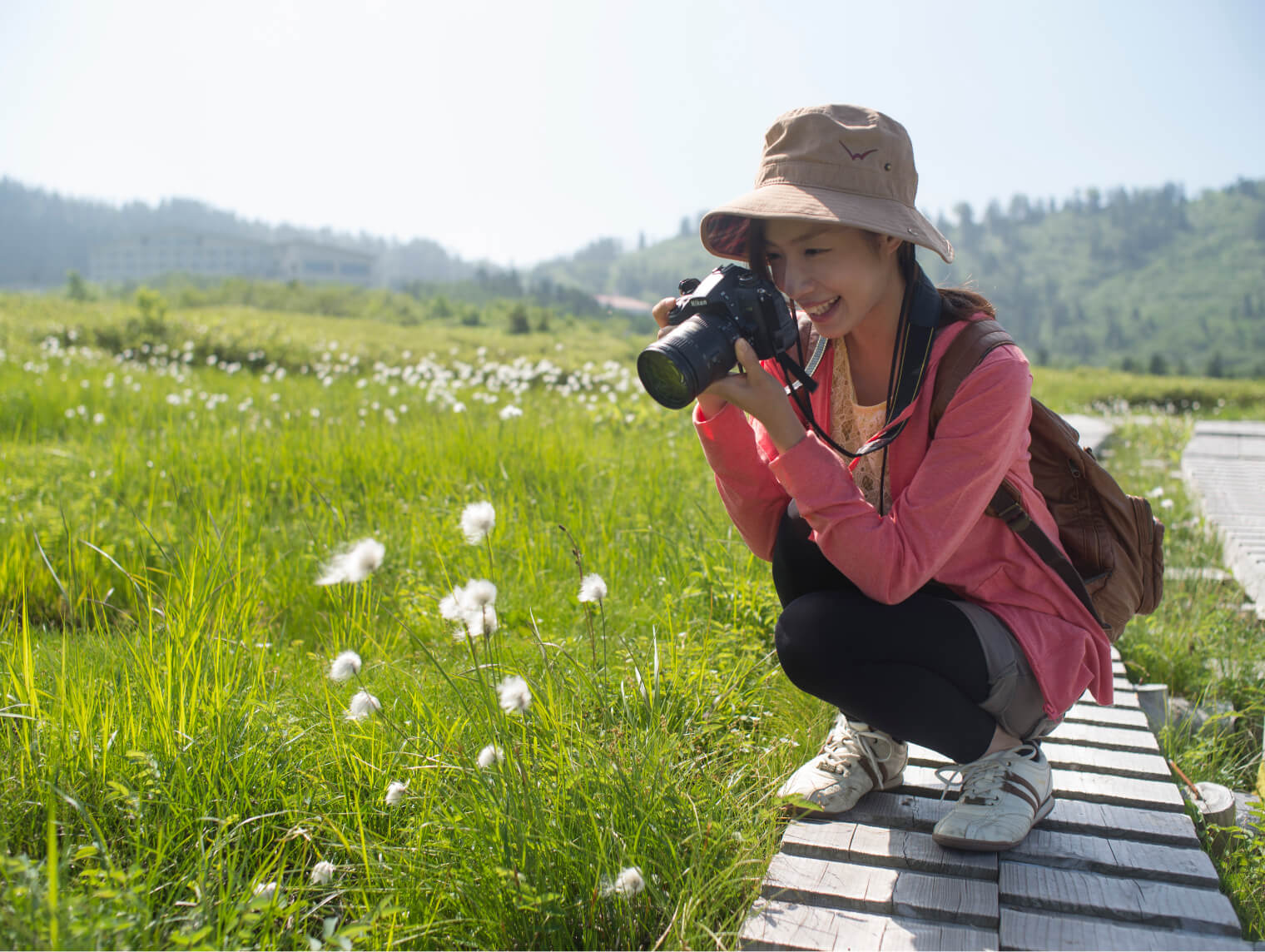
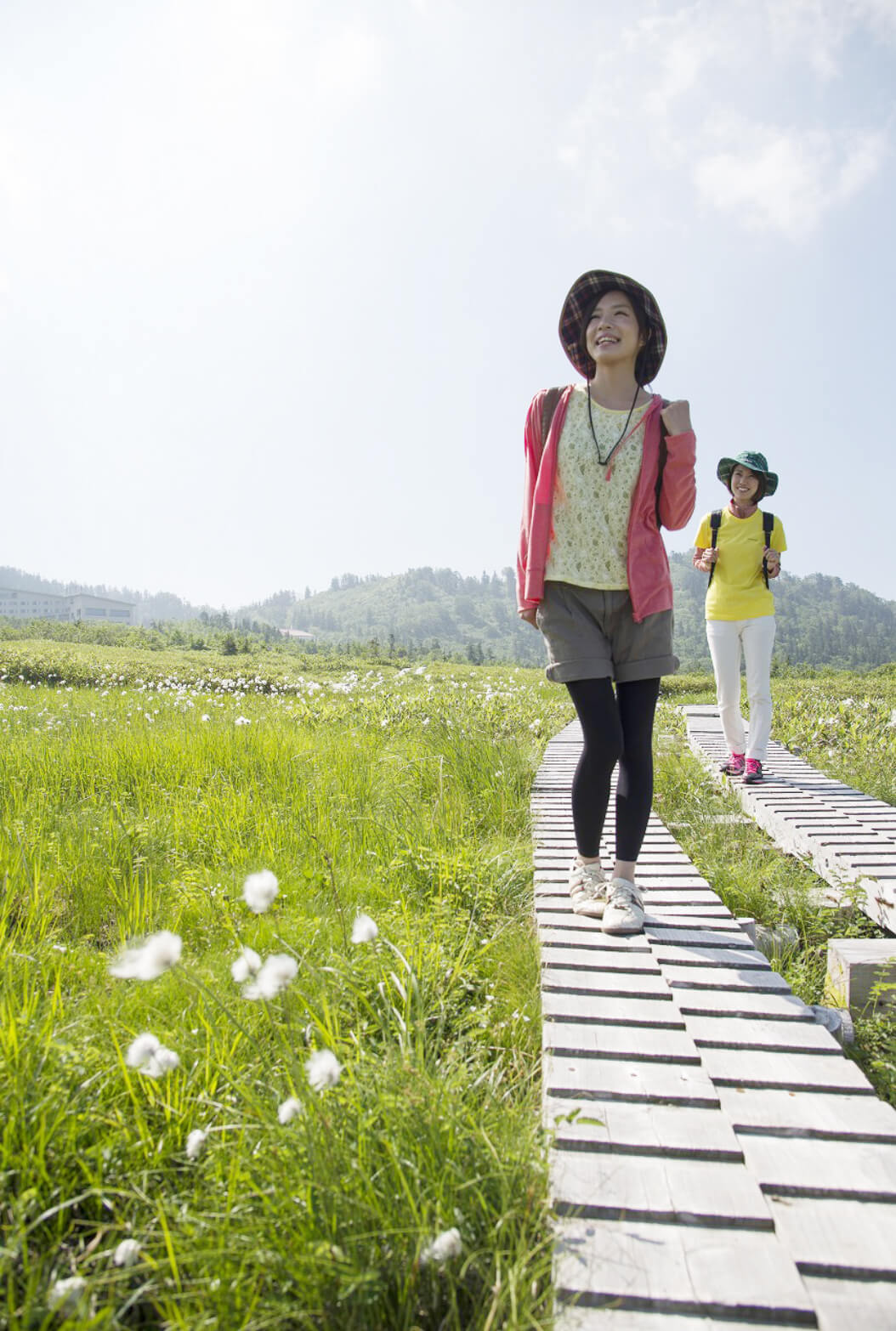
Midagahara
Midagahara lies at an altitude of 1900 m and is one of the largest alpine wetlands in Japan. The hiking course is surrounded by a variety of alpine plants. In July 2012, this area was also registered in the Ramsar convention as one of the world’s most valuable wetlands.
Midagahara Boardwalk
The boardwalk allows you to walk through the vast wetland area. Panoramic views
and abundant alpine plants.
Follow the boardwalk through this wetland area dotted with pretty
ponds.
There are many interesting things to see in this area including an observation deck for a
caldera formed during volcanic activity 200,000 years ago.
See Walking Courses page.
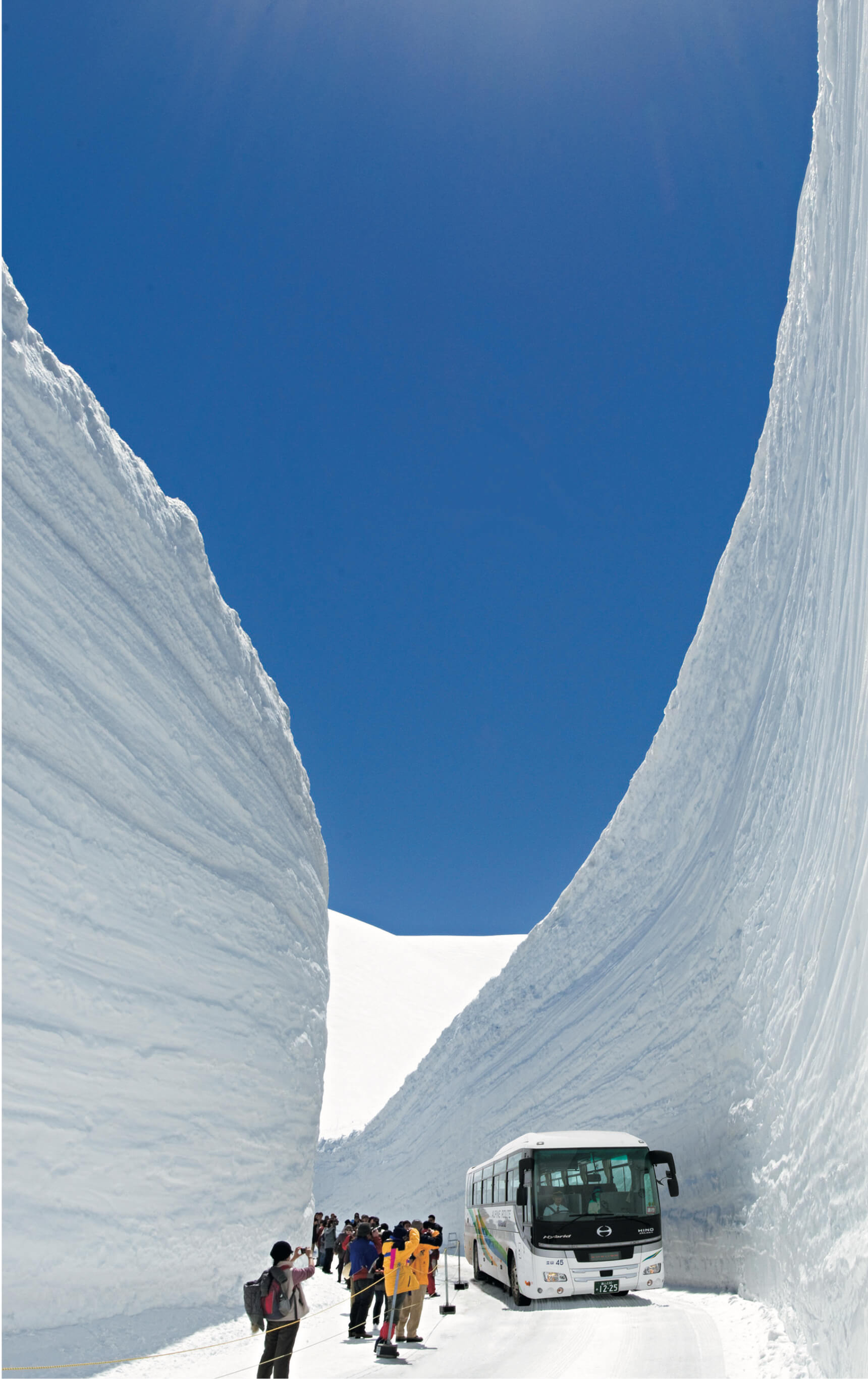
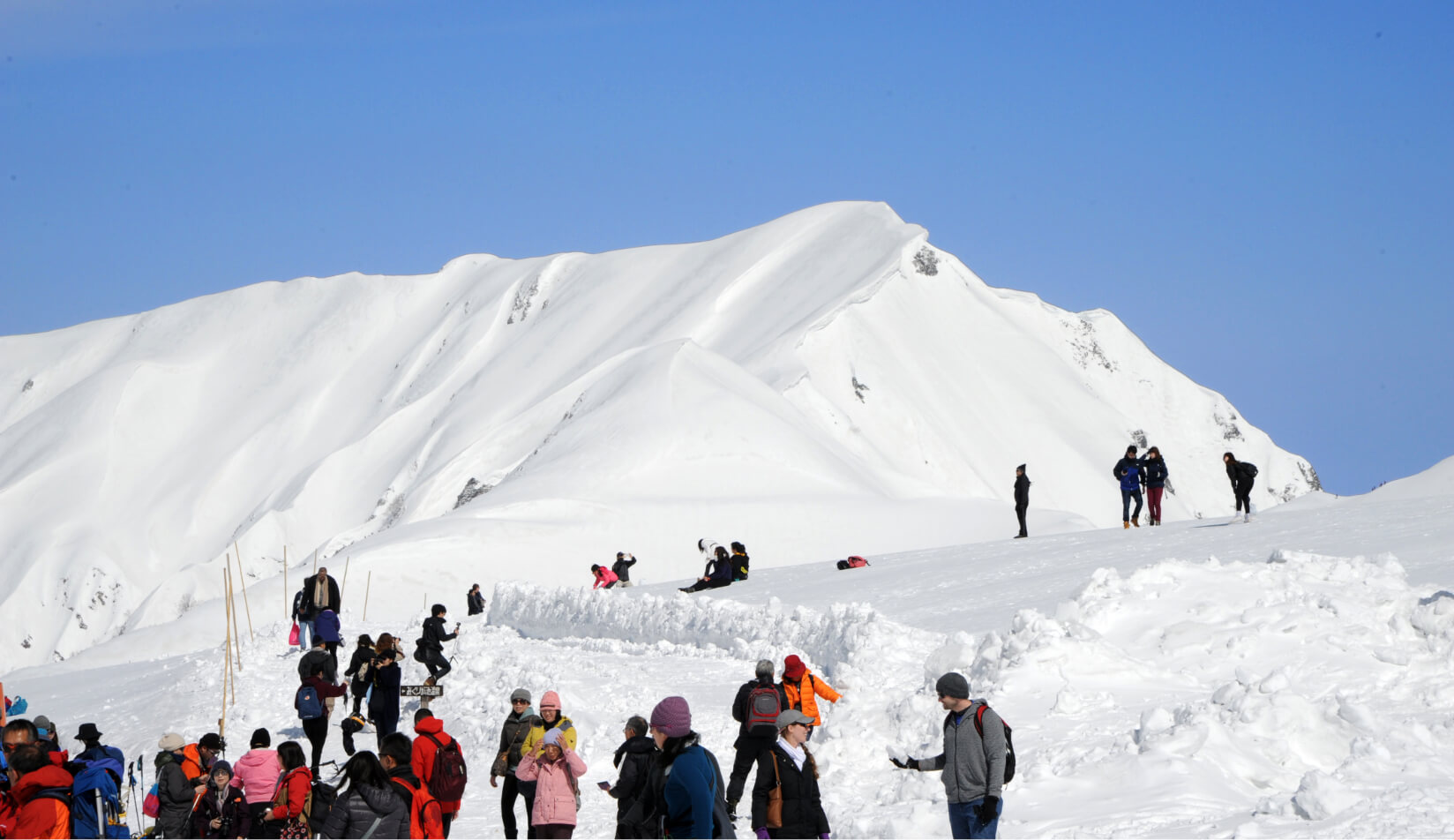

Murodo
”Yuki-no-otani”snow wall
Tateyama has some of the heaviest snowfalls in the world. An average of 7 m accumulates every year. In heavy years up to 20 m can accumulate! That’s as high as a 10 story building! You can walk 500 m between the walls of snow and enjoy sledding in April. You can also watch the snow being removed from the road. Impressive views can be seen just after the road is opened at the end of April until June. After July the walls of snow become shorter but some snow remains even in August. You can play in the snow.
-
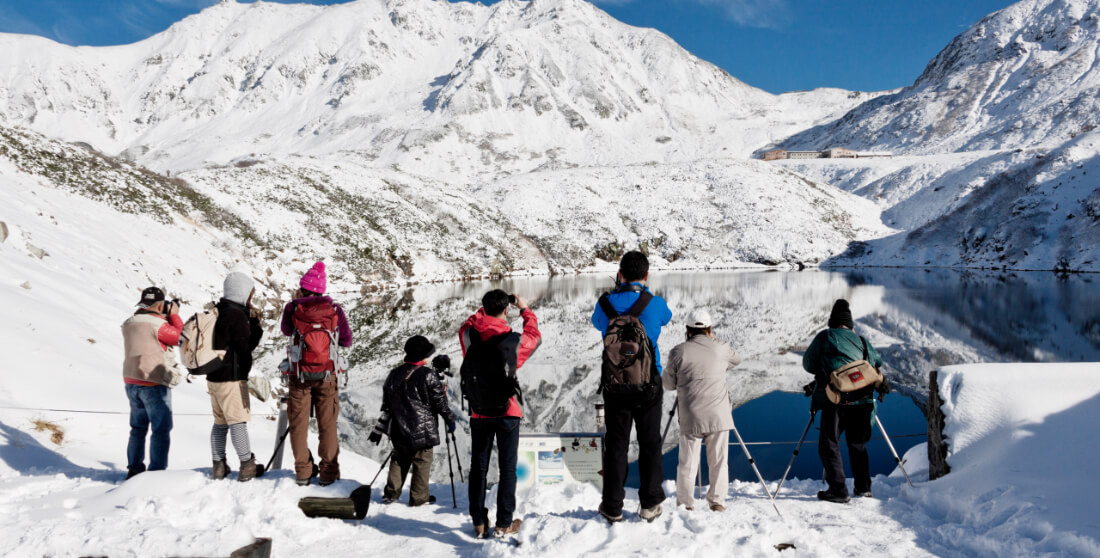
・Mikurigaike (pond)
One of the most picturesque spots for a stroll at Murodo. This is a crater lake of Tateyama Volcano. From June you can see the peak of Mt. Tateyama reflected in the cobalt blue surface of the pond. This pond was called “a kitchen pond for god” and its water was used to cook meals for the god residing on the mountain. This area is home to many rare alpine plants and “Raicho” birds can be seen hiding in the pine bushes.
-
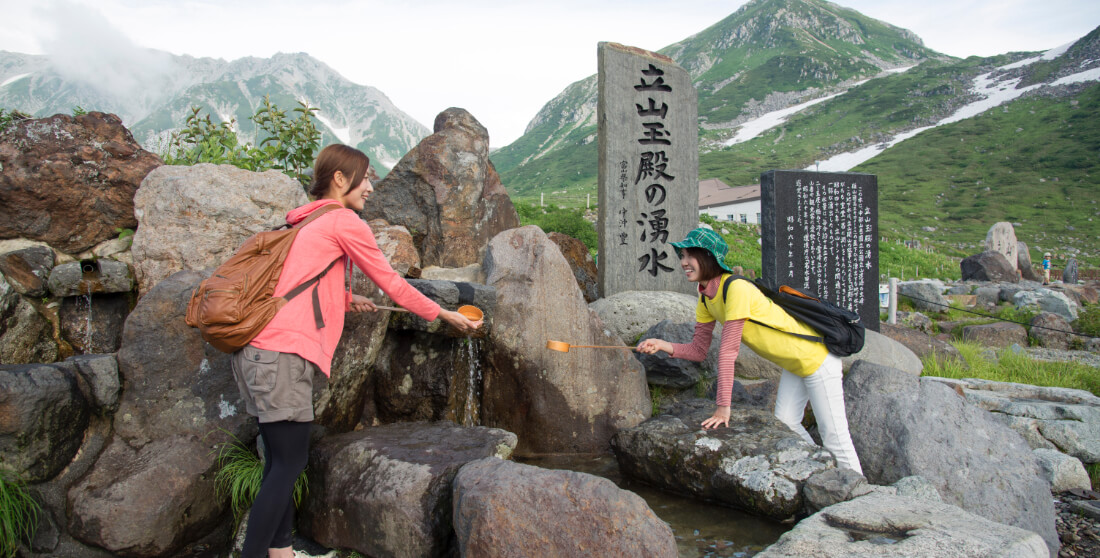
・Tateyama Tamadono Spring Water
This delicious natural spring water has quenched the thirst of many visitors. It is drinkable from early June when the snow starts to melt through to late October.
-

・Mikurigaike Hot Spring
This is the highest altitude natural hot spring in Japan. Half way along the Mikurigaike pond course there is a rest are where you can take a bath in a hot spring during the daytime. You can also enjoy an ice cream here.
-
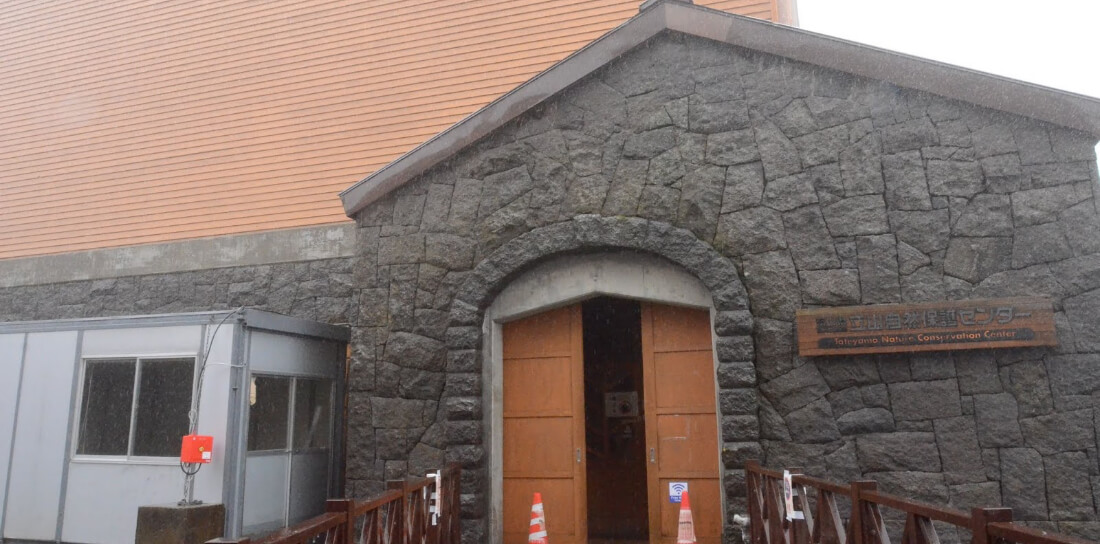
・Tateyama Nature Conservation Center
This facility was established to study the rich nature of Tateyama and bring visitors into contact with it. Rare plants and animals from the Tateyama area are on display here.
Raichozawa(Campground)
Located at the top of the Mikurigaike course, this area displays
the beautiful fall foliage of the Murodo plateau. It is possible to enjoy skiing
here in the spring. A beautiful flower garden of alpine plants can be seen in the
summer. In the autumn you can take in the rich colors of the red, yellow, orange and
green leaves.
In the three mountain huts at Raichozawa you can enjoy a daytime
hot spring bath for between 500 and 600 yen.
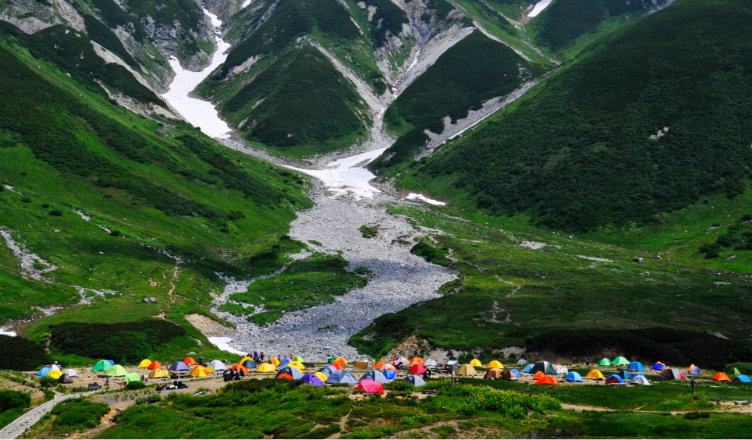
Climbing Mt. Tateyama
Hiking course from Murodo Terminal to Mt. Oyama (3,003 m), which is
one of the summits of Mt. Tateyama. There is a shrine at the summit with panoramic
views and the possibility of seeing Mt. Fuji on a clear day.
See Walking Courses page.
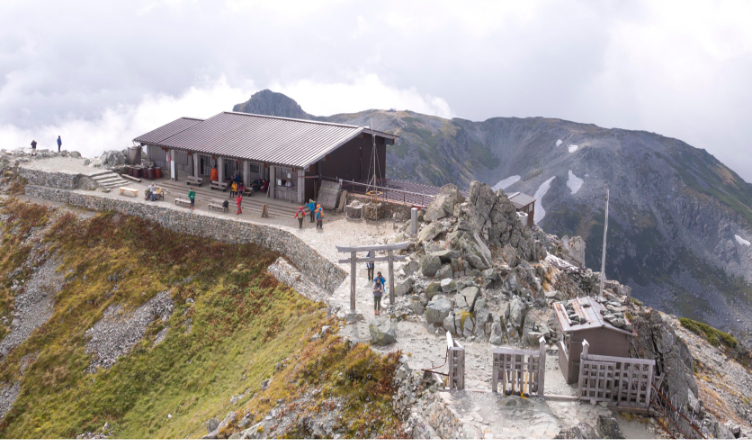
Mt. Murodo View Point Course
Hiking course from Murodo Terminal to Mt. Murodo and Mt. Jodo. You
can look down on the magnificent caldera from the view point. The most distinctive
peak of Japan Alps, Mt. Yarigatake, is also visible.
See Walking Courses page.
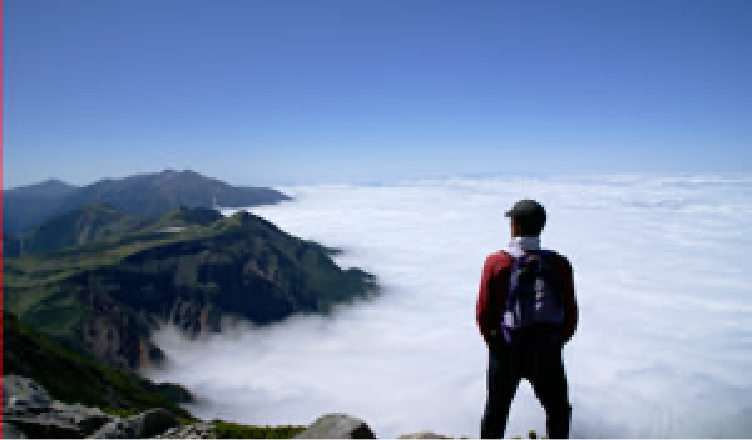
Daikanbo Station
Outstanding view from the second floor and observation deck atop
the station. A wide panorama of the Japan Alps and the lake formed by Kurobe
Dam.
Harinoki Daisekkei, one of 3 snow corridors in Japan where snow remains
even in summer. Mt. Kashimayarigatake (2889 m), one of Japan’s 100 famous mountains,
is also visible from here.
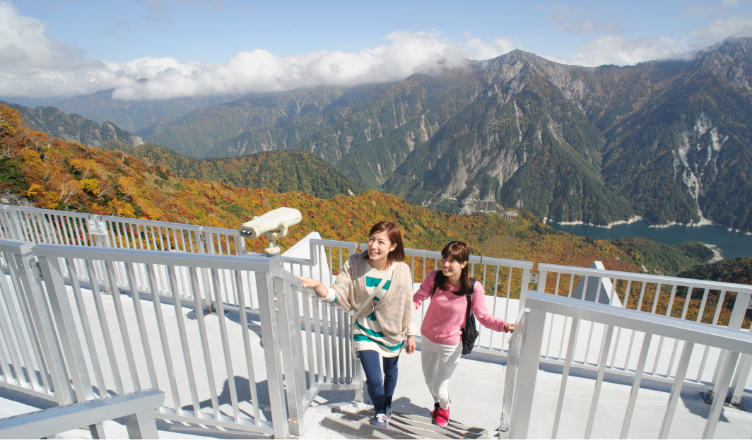
Kurobedaira
There is a garden as you exit the station, surrounded by the scenic mountain range and Kurobeko (lake). The botanical garden displays high altitude plants.
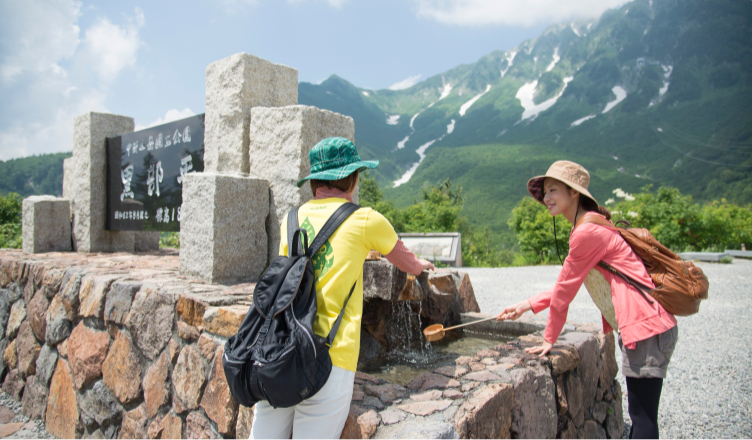
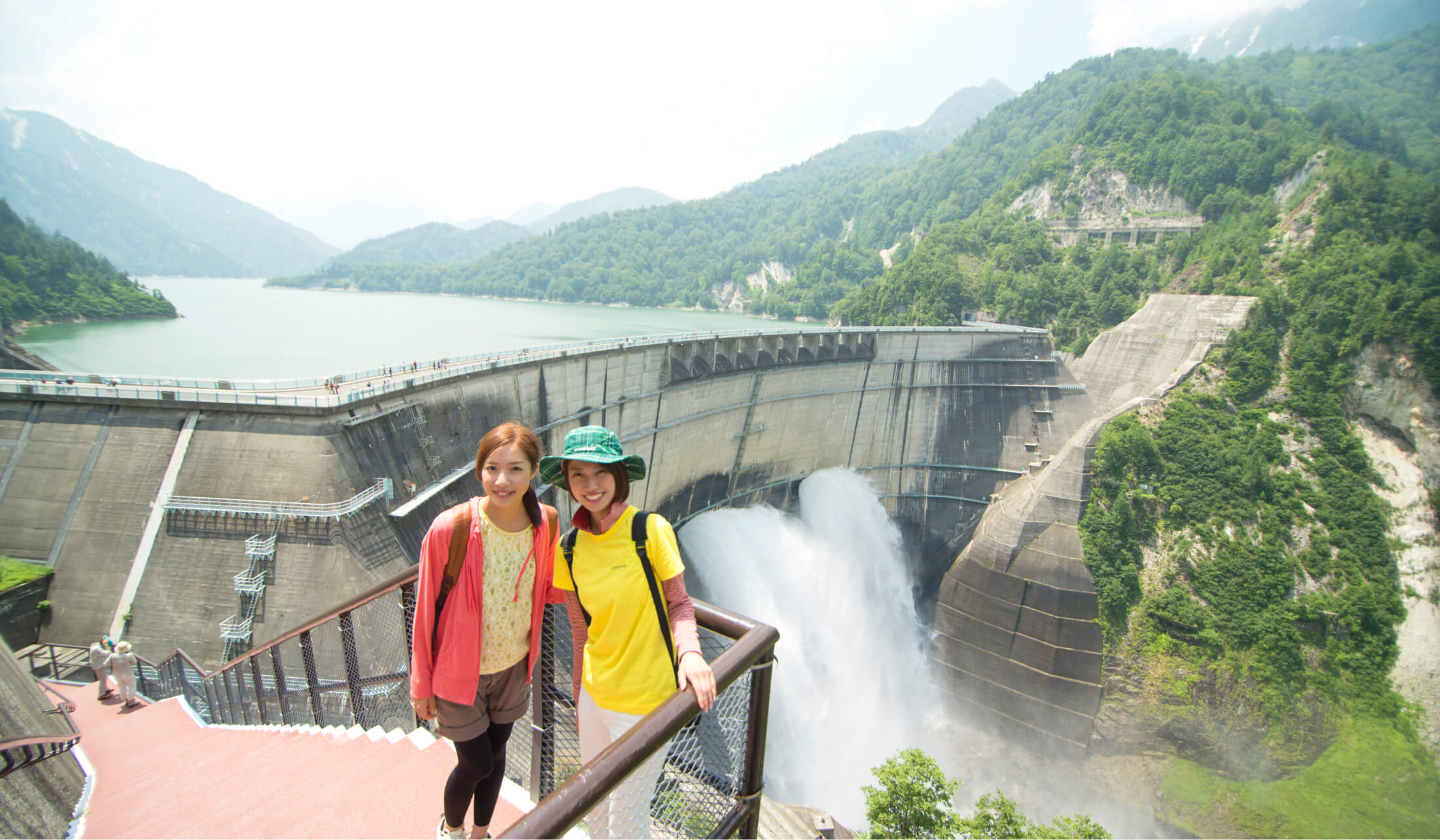
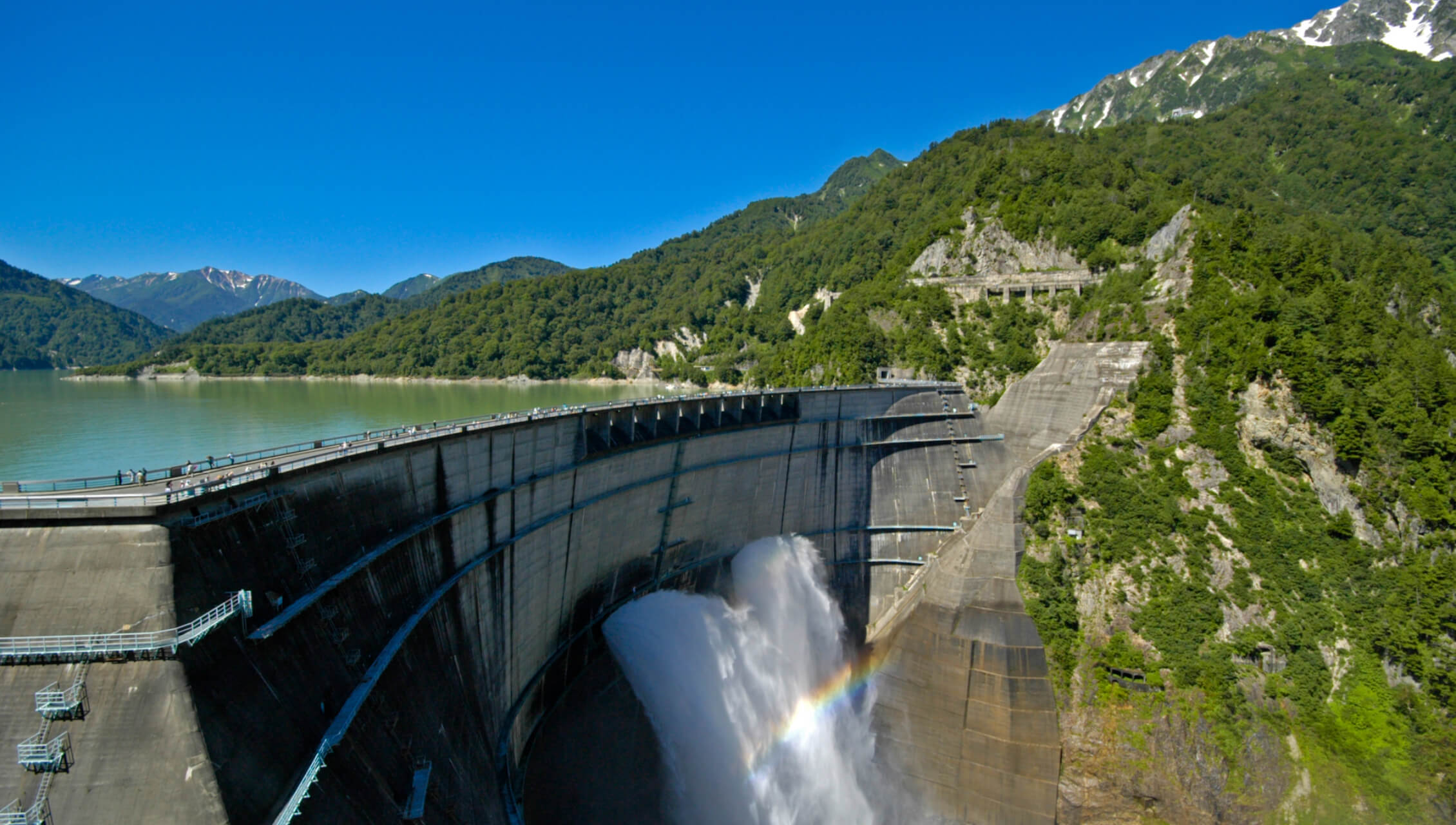
Kurobe Dam
At 1,500 m, Kurobe Dam is the highest arch dam in Japan. The lake behind the dam holds 200 million cubic meters of water. The dam is 186 m tall and 10 cubic meters of water pass through the dam every second generating one billion kWh per year.
Dam Observation Deck
Climb 220 stairs to see the finest view of the dam. Also a great view of the water discharge. 10 tons of water shoot out of the dam every second producing a beautiful rainbow.
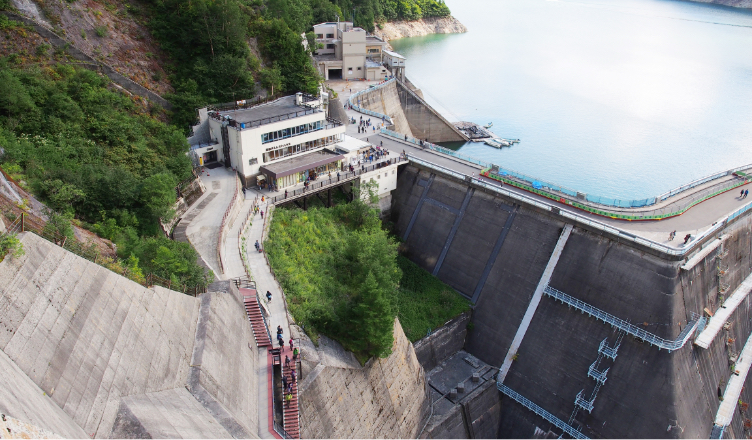
Kurobe Cruise Ship “Garube”
The highest sailing pleasure boat in Japan (1448 meters). The scenery of Lake Kurobe and the view of the Alps reflected on the surface of the water here are just beautiful.
- Time required 30 mins
- Distance traveled 11.5 km
- Service Period Jun 1 – Nov 10
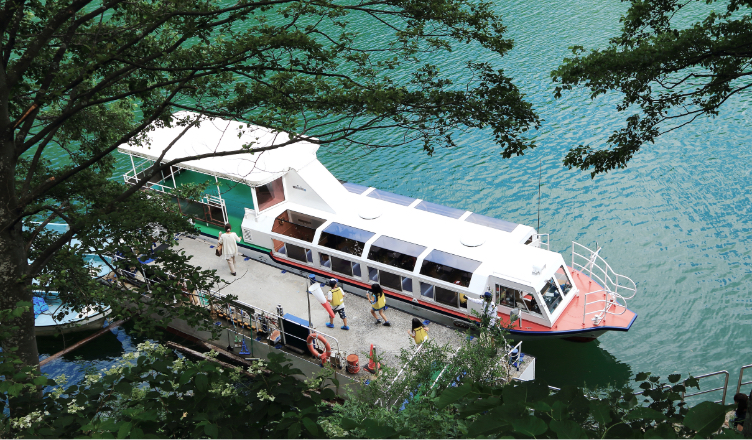
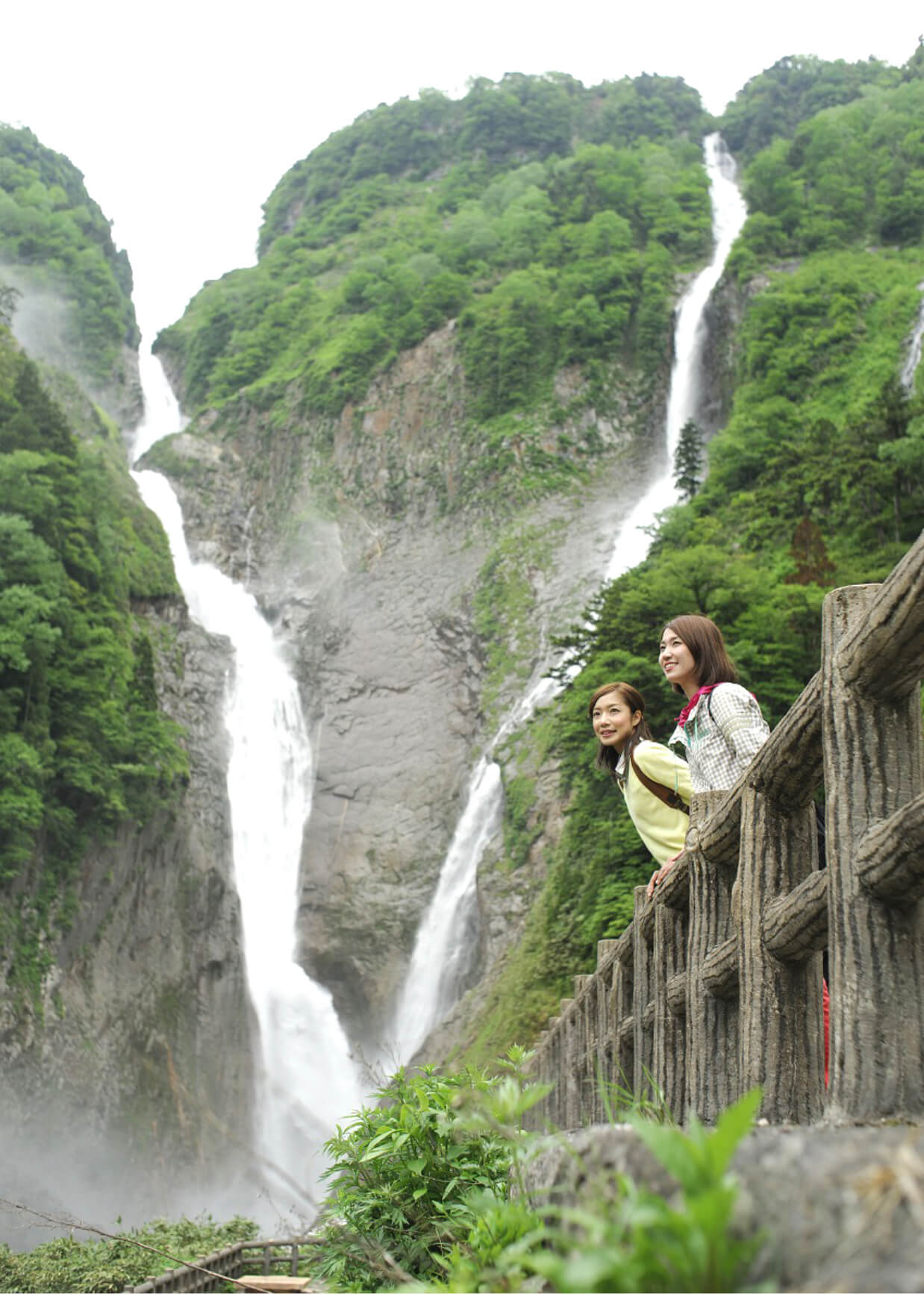
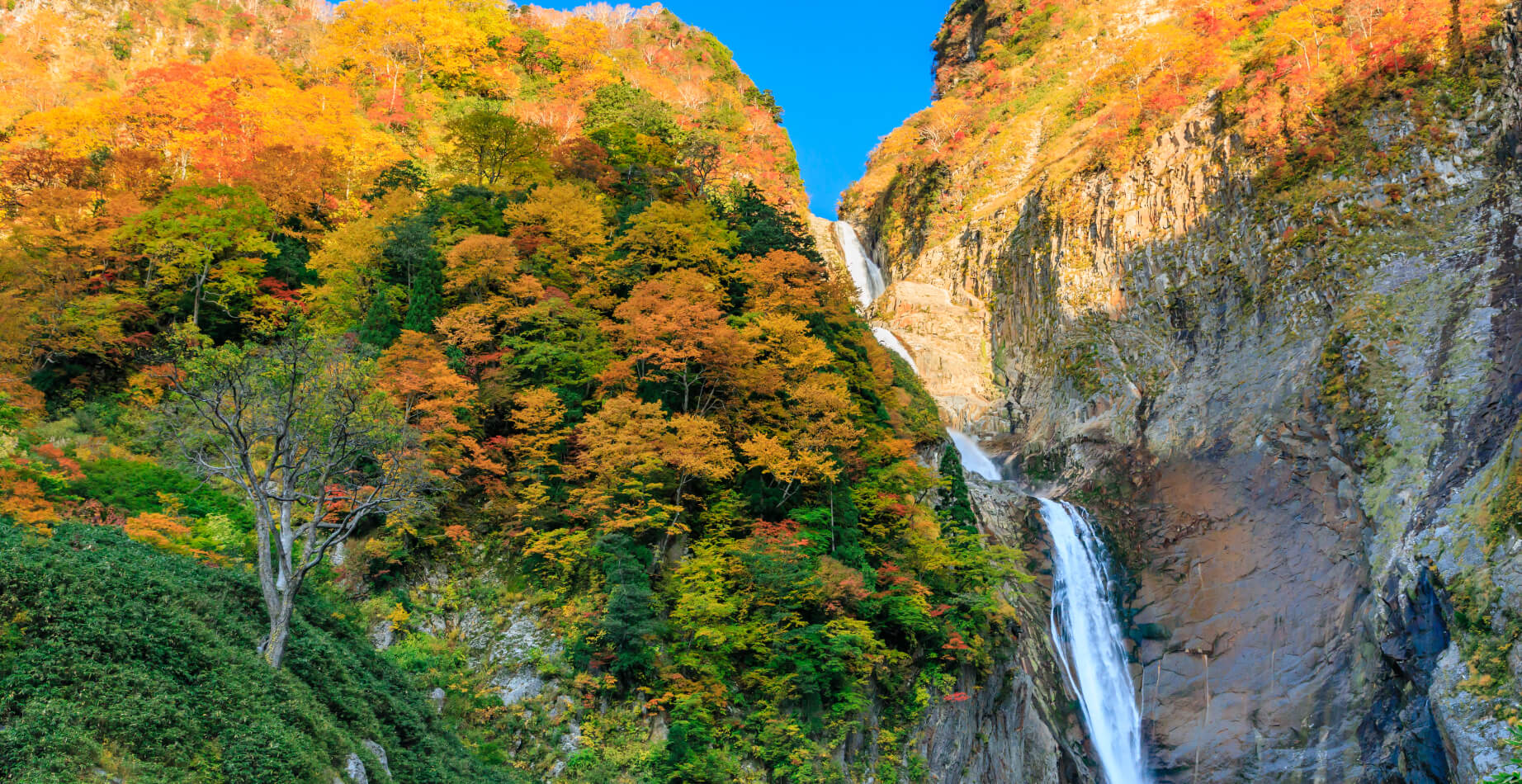
Shomyo Falls
Shomyo Falls, the tallest waterfall in Japan, drops 350 m as it roars and flows
into the gorge. During spring, the 500 m Hannoki Falls appear along with the snowmelt. Buses are
available to here from Tateyama Station.
In this area you can enjoy the dramatic gorge scenery.
With an elevation change of 600 m the change in the distribution of plant life is also visible. From
the rest area and observation deck the Shomyo falls can be admired from various angles.
Others
Ogizawa, Omachi Area
Ogizawa is the entrance to the Alpine Route from the Nagano side. The spacious terminal has a restaurant and gift shop. The bus journey from Shinano Omachi Station takes 40 minutes via Omachi Onsenkyo.
Omachi Onsenkyo (hot springs)
Wash away the fatigue from your journey by relaxing in the hot springs of traditional Japanese inns with majestic views of the Japan Alps. Close to the bus stop you will also find day trip hot springs (no overnight stay required) and a hot spring museum. There is also a museum of Japanese Sake which you can try tasting, and a museum of Ukiyo-e (wood block prints) that were loved by Vincent van Gogh.
Omachi Mountain Museum
museum with information on the natural environment and animals of
Tateyama. There are also exhibits on the history, tools, and paintings of
mountaineering. An impressive panoramic view of the Japan Alps can be enjoyed from
the observation deck on the third floor. There is free entry to the nature garden
where you can see Japanese serow.
Below the museum, Omachi Park is filled with
cherry trees that produce beautiful blossoms from mid-April to early-May. See also
Omachi City Tourism
Association website.
